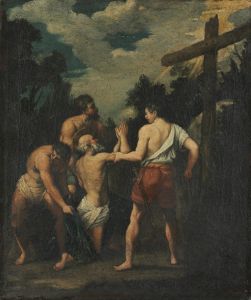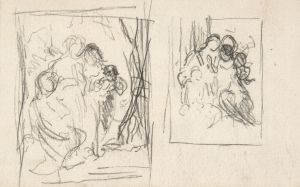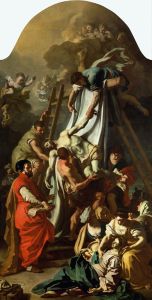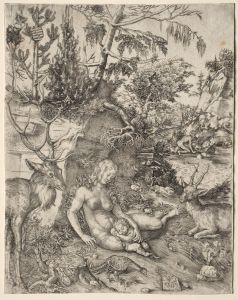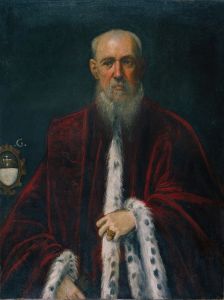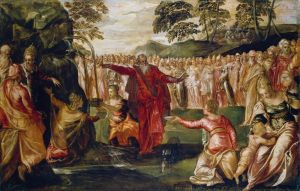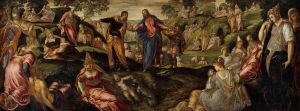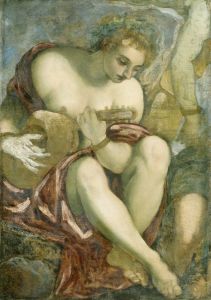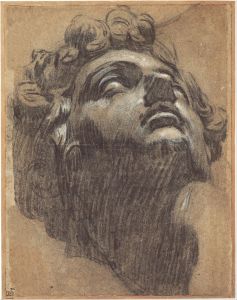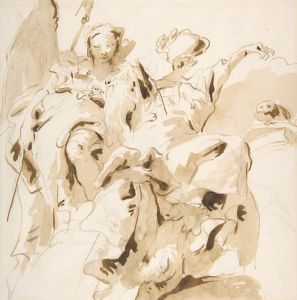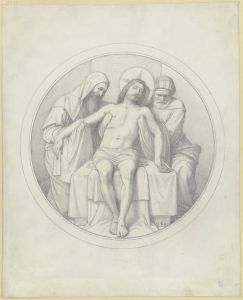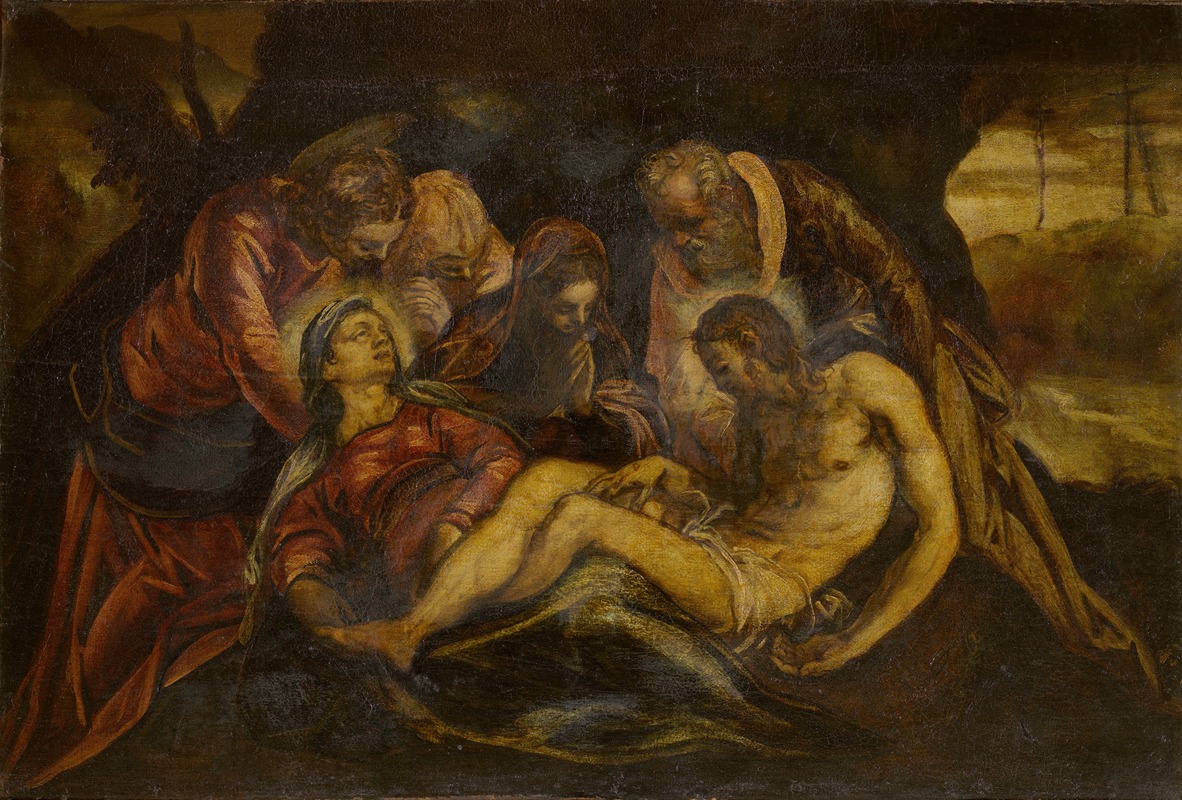
Lamentation over the Dead Christ
A hand-painted replica of Jacopo Tintoretto’s masterpiece Lamentation over the Dead Christ, meticulously crafted by professional artists to capture the true essence of the original. Each piece is created with museum-quality canvas and rare mineral pigments, carefully painted by experienced artists with delicate brushstrokes and rich, layered colors to perfectly recreate the texture of the original artwork. Unlike machine-printed reproductions, this hand-painted version brings the painting to life, infused with the artist’s emotions and skill in every stroke. Whether for personal collection or home decoration, it instantly elevates the artistic atmosphere of any space.
Jacopo Tintoretto's Lamentation over the Dead Christ is a painting attributed to the renowned Venetian artist of the late Renaissance period, Jacopo Tintoretto (1518–1594). Tintoretto, known for his dramatic use of perspective, dynamic compositions, and striking contrasts of light and shadow, was a central figure in Venetian art during the 16th century. This work exemplifies his ability to convey intense emotion and spiritual depth through his distinctive style.
The painting depicts the biblical scene of the lamentation over Christ's body after his crucifixion, a subject frequently explored in Christian art. In this composition, the lifeless body of Christ is surrounded by mourners, including the Virgin Mary, Mary Magdalene, and other figures traditionally associated with this moment of grief. Tintoretto's treatment of the scene emphasizes the emotional weight of the event, with the figures arranged in a way that draws the viewer's attention to Christ's body as the focal point.
The use of chiaroscuro, a hallmark of Tintoretto's work, is evident in the dramatic interplay of light and shadow, which enhances the somber mood of the painting. The figures are rendered with a sense of movement and energy, characteristic of Tintoretto's dynamic approach to composition. The artist's skillful use of perspective creates a sense of depth, drawing the viewer into the scene and heightening the emotional impact.
While the exact date of the painting's creation is not definitively known, it is generally attributed to Tintoretto's mature period, when he was producing some of his most celebrated works. During this time, Tintoretto was deeply influenced by the spiritual and artistic currents of the Counter-Reformation, which sought to inspire devotion and piety through art. This influence is reflected in the painting's focus on the human suffering and divine sacrifice of Christ.
The painting is housed in a collection that reflects Tintoretto's significant contributions to Venetian art. Its current location is often cited as a museum or gallery, but specific details may vary depending on the source. As with many works of this period, the painting has been studied for its artistic and historical significance, contributing to our understanding of Tintoretto's oeuvre and the broader context of Renaissance art.
This work remains an important example of Tintoretto's ability to combine technical mastery with profound emotional expression, making it a notable piece within the canon of religious art.






